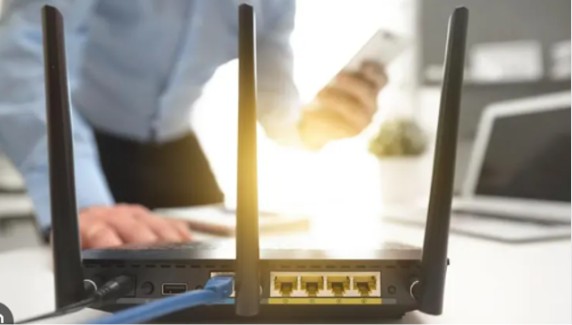Do you want to get fiber internet service at your house? You’ve made a wise choice because fiber connections are reliable and speedy.
Since every provider has its own procedure for installing fiber broadband, it would be hard to describe in detail what you would go through if you requested a fiber installation from your local service provider. In this article, we’ll take a closer look at Ziply Internet.
To make sure we don’t assume too much about your level of knowledge, we’ll go over everything a provider should normally do during fiber-optic internet installation and why Ziply Fiber hasn’t arrived in your area just yet.
Let’s find out what a fiber broadband connection can do for your internet experience before we go in.
How Does Fiber-optic Internet Work?
Fiber-optic internet, also known simply as fiber, is a super-fast network that may reach speeds of up to 1 Gbps (1 Gigabyte per second). Theoretically, it can reach speeds of up to 940 MB/s, which is fast enough for virtually any task. But how is such speed possible?
The cables themselves make use of fiber-optic technology. Signals can move at up to 70% of the speed of light, thanks to the cable’s reflective interior. The wires can also survive harsh weather, such as rain, lightning, and wind.
That’s why fiber connections rarely experience attacks. Last but not least, the cables can withstand electrical disruptions.
Does fiber speed up your internet connection? Undoubtedly, fiber internet is super fast. Fiber internet is faster and more dependable because of the underlying technologies it uses.
Fiber is the superior option for households with many users.
Putting up Fiber-Optic Internet
Now that we have a firm grasp of fiber technology, it is time to learn about the steps involved in setting up fiber broadband. As was previously noted, the installation process varies depending on the service provider.
But we’ll do our best to deliver a broad overview that should prepare you for dealing with Ziply Fiber.
Once the broadband provider receives your installation request, they will handle everything else. After that, they will get in touch with the fiber firm to discuss the next steps. But first, they’ll discuss the specifics of your needs and the address of your home.
Then, authorized, competent professionals will be dispatched to investigate your property. Then, they will pay a visit to your home or business to get an in-person look at what has to be done and how.
During that time, they will also perform any necessary physical installation. You will have continuous, direct communication with the fiber company.
Why isn’t my Neighborhood Equipped with Fiber Optics?
The short answer is no, there is no fiber infrastructure in your location. Broadband or DSL is still used in many places, especially in smaller towns and rural areas, and this may be adequate for many people.
However, the ultra-fast, symmetrical speeds of fiber will become more of a demand as more of our lives move online for reasons such as education, remote job, streaming video, and gaming. Your home can have access to the fastest and most reliable internet available, we hope.
Now, let’s look at some of the obstacles that have to be overcome to bring fiber-optic internet to your area.
Geography
An ISP must either attach fiber-optic cables to already-existing utility poles or dig new trenches to bring fiber to a neighborhood. This may be difficult in areas with topographical difficulties, such as mountainous or rural regions.
The good news is that federal and local governments have been investing in fiber infrastructure development to reduce the digital divide. This is the reality that many communities are far behind others in terms of connectivity.
Ziply Fiber collaborates with government organizations to speed up fiber infrastructure construction and decrease prices for Northwest cities. Ziply Fiber has already brought the internet to some of Idaho and Montana, two areas with some of the slowest speeds and least connection in the United States.
Budget
The United States Department of Transportation estimates that the typical cost of installing fiber optics is $27,000 per mile. Unfortunately, there is no motivation for an ISP to bring fiber to a remote rural location.
In order to deliver fiber to a new location, providers must hire contractors to lay fiber cable across enormous areas. That’s a huge expenditure that won’t bear fruit if there aren’t enough individuals willing to pay for the service being offered. Therefore, rural communities and those without access to municipal funds will be among the last to receive fiber.
Companies like Ziply Fiber believe strongly that everyone should have access to fast, dependable fiber internet, even if many of the major ISPs are too profit-driven to bother bringing fiber to a smaller market. Northern Idaho and Montana, which have fewer people, are among the places where Ziply Fiber is fast developing.
All in All
ISPs are currently in a race to the finish to increase fiber access, and with the advent of innovative infrastructure techniques like micro trenching, fiber may eventually reach you sooner than you think.
What are the chances? Perhaps fiber is already available in your area, and you’re on the verge of enjoying the internet, your workplace, and your favorite games and shows at the speed of light.






![YouTube SEO in 2024 [Definitive Guide]](https://getpixie.com/wp-content/uploads/2024/02/shutterstock_1684828252-1-150x150.jpg)








